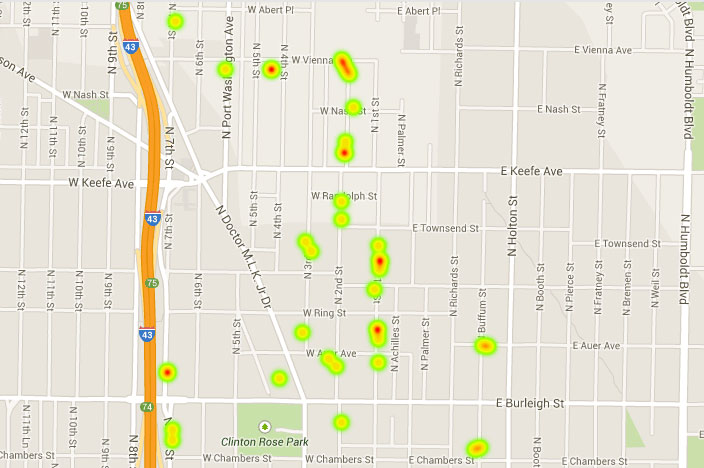Shantanu Singh is the founder of Vacant Voices, an organization committed to solving the problem of abandoned homes in America's neighborhoods. In this guest post, Shantanu explains how Vacant Voices uses ODK to collect and deliver crowd-sourced neighborhood data to community organizations who can make a difference.
Vacant properties are an important issue that needs an urgent solution. A 2015 report concluded that 1 out of 4 foreclosures in the United States are vacant. The actual number at the end of January 2015 was over 142,000. The number is alarming when you consider the contagion and deleterious impact caused by vacant homes. Research has established that these blight-causing properties reduce property values, increase crime rates, and worsen physical and emotional health.
At Vacant Voices, we wanted to develop a tool to help these communities. One that would allow residents to collect data (e.g., a GPS tag for the location, a standardized description, and an optional image) of problem properties. The collection could be spontaneous or scheduled. Community-sourced data that we could deliver to decision makers was our goal.
Through prior experience, we understood municipal categorization of vacant properties to be technical and not uniform across the country – in short, not user friendly. At the same time, we knew geographic information systems (GIS) and government data already existed (the statistics above were extrapolated from federal and local data). However, these systems can be hard for communities to find, can be complicated to use, and use old data that may not even be relevant for the specific need.
To collect and analyze data sourced from the community, we needed a better way. After a lot of research, we came across ODK. It seemed too good to be true. In front of us, there was a solution, one that not only provided a checklist interface, it also organized the data into a database (no data entry!), and you could visualize the spatial relationship of properties on a map, along with performing analytics useful to decision makers. Now we could standardize the definition of a vacant home, in a rubric that eliminated subjectivity.
ODK was great, but we had more demands. The tool needed to be reliable, effective, and efficient from a technical perspective. This was when we reached out to Nafundi. We had confidence in Yaw and his team because they developed ODK originally and had a proven track record. Nafundi immediately understood our goal and delivered on our vision. In only a few days, they helped us translate the idea into a user friendly app that could be used by people with limited technical experience.
 A map showing the concentration of homes with peeling paint. From this map, users can immediately see clusters of vacant properties which are priorities.
A map showing the concentration of homes with peeling paint. From this map, users can immediately see clusters of vacant properties which are priorities.
Since the spring of 2014, we have showcased Vacant Voices at conferences and put the app in the hands of community organizations across the country who love it. We can get an organization up and running by ourselves quickly, and if we need customizations, we always have the option of calling up the team at Nafundi.
We encourage others who have a vision for community-based planning to use ODK and work with Nafundi. Your vision can be made real and it can soon be in the hands of the people you want to help.
In early 2018, polio virus was detected in the sewers of Mogadishu, Somalia and the government moved quickly to vaccinate the country's children in order to prevent a potential outbreak. A vaccination campaign targeting more than 726,000 children was launched in the Banadir and Lower and Middle Shabelle regions. The campaign was carried out by some 3,500 staffers and Nafundi assisted by enabling real-time tracking of vaccination coverage using ODK. Read more.
Fayaz Jatoi is the Coordinator of the Emergency Operations Centre (EOC) for Polio Eradication in Sindh, Pakistan. In this guest post, Fayaz describes why AFP surveillance is critical to polio eradication and how an SMS-based reporting system for private care provider helps. Read more.
This position has been filled. Thanks to everyone who applied! Read more.